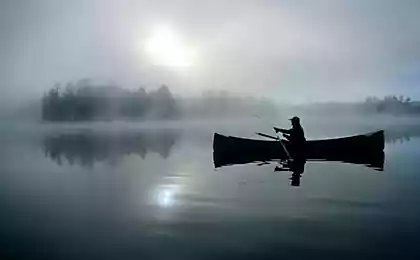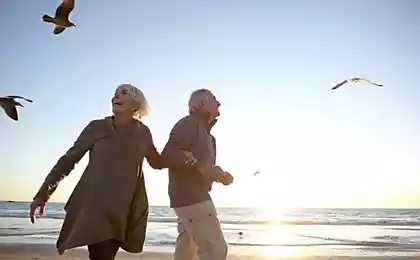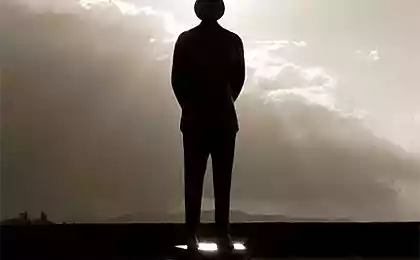1816
Uninhabitable places
Well, if you are lucky enough to be born in the province, where there are no tsunamis, volcanic eruptions and hurricanes. For the inhabitants of some countries natural disaster - an everyday reality. Journal of Popular Mechanics found on our Planet 8 most uninhabitable places.
1.Polyus cold
Verkhoyansk, Russia
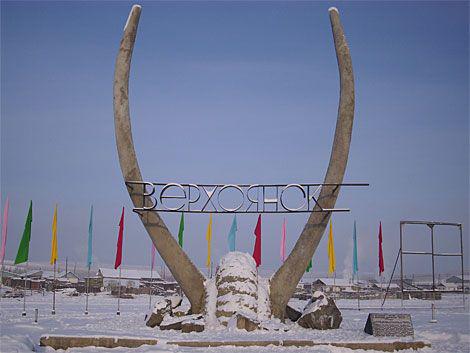
In the taiga, in the heart of Siberia is the oldest city in the Arctic Circle. For more than three centuries, people exist in difficult climatic conditions on the bank of the Yana River, covered by ice 9 months of the year. To date, the cold pole is home to about 1,500 people.
Verkhoyansk claims to be the coldest city on earth. It is difficult to argue, given that from September to March the sun shines an average of only 5 hours a day, and in January and in December it did can not be. In winter, the average temperature in these places is minus 47 degrees Celsius. The lowest it dropped at the end of XIX century - to minus 67, 8 degrees.
In imperial times, and during the Soviet era Verkhoyansk was a place of exile. Today the city is trying to attract extreme tourists. 2.Ognennaya mountain
Mount Merapi, Indonesia
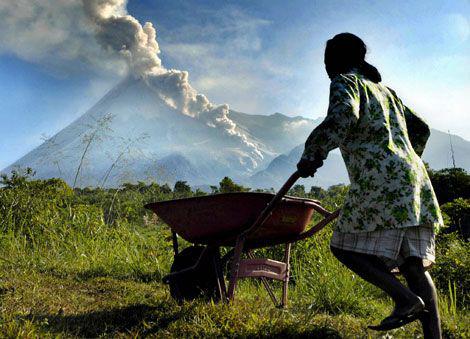
This volcano does not happen on weekends. Even when no eruptions from its summit into the sky at 3000 meters rises a huge column of smoke. Over the past five centuries Fire Mountain (which is how the name translates from the local language) "flashed" about 60 times. Last terrible eruption occurred in 2006, before - in 1994 deadly cloud of hot gas burned to death 60 people. More than 1,000 people died in 1930 when the volcano ejected lava covered the territory of nearly 13 square kilometers.
Despite all these developments, less than 6 kilometers from the volcano 200 000 live local residents. However, no one in Indonesia, it will not surprise 120 million slum the island of Java have built homes at the foot of some of the 22 active volcanoes.
3.Grozovoy Haiti
Gonaives, Haiti
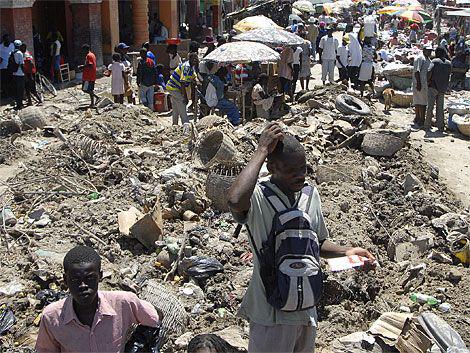
Here are just a chronicle of 2008: the first August 16 came tropical storm "Fay", a week it was the turn of Hurricane "Gustav", then the island plagued Hurricanes "Khan" and "Ike". In one month, the coastal village of Gonaives - it is among the five largest cities in Haiti - turned out in the midst of tropical cyclone four times, killing about 500 people, most of the village was buried under the mud or flooded with water.
In 2004, the city that is home to 104,000 residents, visited the hurricane "Jeanne". The victims of the storm the third category were three of thousands of Haitians.
Why is constantly Gonaives is under attack? The city was built in the coastal zone, on shaky ground floodplain. In addition, local residents using wood for coal - the main fuel in these places, cut down forests on the surrounding hills. Tree roots held back the soil, and now any rain at once causes mudslides, landslides.
4.Afrikanskoe lake death
Lake Kivu, Democratic Republic of the Congo and Rwanda
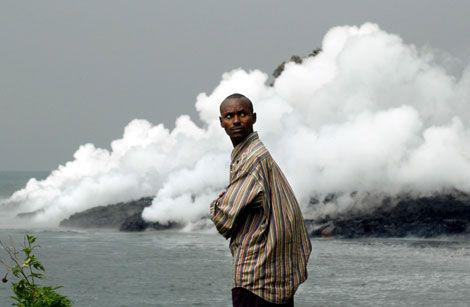
One of the largest lakes in Africa is on the border between the Democratic Republic of the Congo and Rwanda. Under its deep waters hide deposits of methane. If the deadly gas reaches the surface, the cloud of death will cover 2 million homes of local residents who have settled around the reservoir.
It is possible: a similar case has already taken place in the 80s of last century in two other African lakes with a similar chemical composition. So, in 1984, 37 local residents were killed in the Lake Monoun in Cameroon, and three years later a similar incident had happened at Lake Nyos in the same country where the impact of toxic gases 1,700 died. Moving the gas was provoked, apparently of volcanic activity.
5.Efemernye island
Maldives
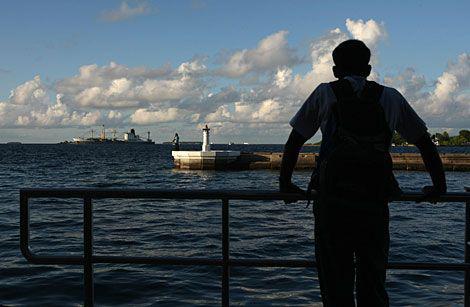
10% of the Maldives became uninhabitable after the 2004 tsunami that killed more than 80 people and left a third of the homeless population. However, this state are waiting for more ordeals.
Maldives, a confederation of 1,190 islands and atolls in the Indian Ocean - is so dangerous region that President Mohamed Nasheed after taking office in 2008 proposed the creation of a special fund to purchase new land and resettlement of indigenous people. The fact is that due to global climate change and associated sea level rise Maldives can submerge in the foreseeable future - a few decades, because none of the islands does not rise above sea level by more than 2 meters.
The Fund is formed by the money earned by tourism. As the "safe havens" for residents 'ephemeral islands' president calls to India and Sri Lanka, which is strange, because, according to forecasts, the Indian subcontinent will be among the first affected by changes in global sea level areas.
6.Mirovaya capital hurricanes
Grand Cayman
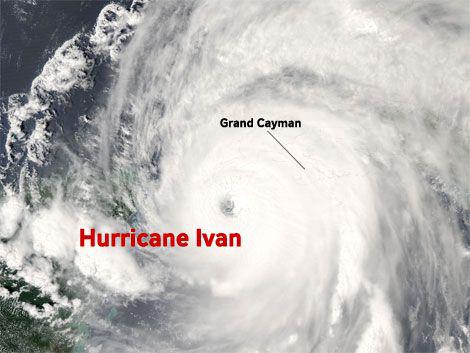
Many tourists come to the Caribbean for the sake of unspoilt beaches and diving. Cayman Islands - a British territory located south of Cuba - have acquired this image of a tropical paradise. However, there are also other, less attractive name - the world capital of hurricanes. After all, the largest of the three islands of the archipelago suffers from that wild every 2, 16 of the year - more than any other land in the waters of the Atlantic Ocean.
In 2004, Hurricane "Ivan", who had been assigned to Category 5, killed on the island 70% of the buildings, 40,000 residents for several days were deprived of electricity and clean water.
7.Magistral for tornado
Oklahoma
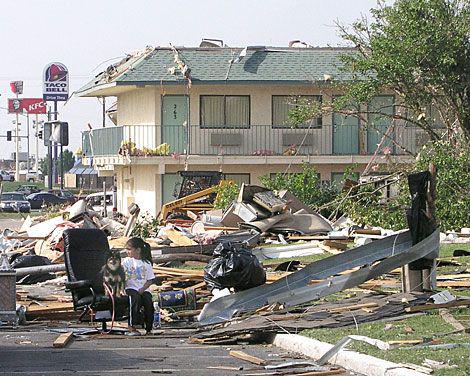
More than a million people live along the international highway I-44 in the US, linking the Oklahoma City and Tulsa. Each spring, when cool and dry air of the Rockies down into the valley and meets with warm moist air from the ocean, along I-44 gives rise to vortices, and because local residents began to call this line "street tornado».
Since 1890, a tornado tore Oklahoma City and its environs more than 120 times. May 3, 1999 70 vortices immediately passed through Oklahoma, Kansas and Texas. The most devastating tornado swept through Oklahoma City, destroying 1,700 homes and damaged another 6,500 buildings. Despite the modern possibilities of disaster prediction and alarm systems, killed 40 people, the total damage from the hurricane totaled $ 1 billion.
The longest period without a hurricane - 5 years - was from 1992 to 1998. But then, as if making up for lost, for 11 months over that edge swept 11 of the strongest tornadoes.
8.Bluzhdayuschie deserts of China
Minquin, China
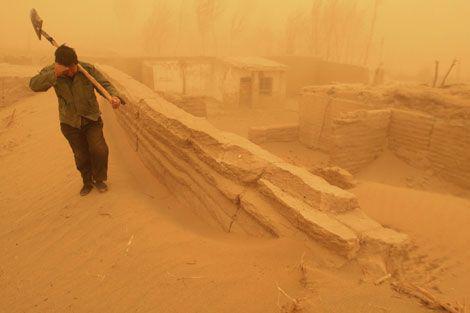
The once fertile oasis now experiencing restless time: he was sandwiched between the deserts. Ten-year drought, the disappearance of the rivers led to the fact that the south-east and north-west of the region is rapidly moving sands. Since 1950, the desert swallowed up more than 160 square kilometers, the resident population over the same period has increased from 860,000 to more than two million people.
Since 2004, the desert close to people at a speed of 10 meters per year. The territory of arable land decreased by six times, and the Chinese government was forced to begin the resettlement of farmers.
1.Polyus cold
Verkhoyansk, Russia

In the taiga, in the heart of Siberia is the oldest city in the Arctic Circle. For more than three centuries, people exist in difficult climatic conditions on the bank of the Yana River, covered by ice 9 months of the year. To date, the cold pole is home to about 1,500 people.
Verkhoyansk claims to be the coldest city on earth. It is difficult to argue, given that from September to March the sun shines an average of only 5 hours a day, and in January and in December it did can not be. In winter, the average temperature in these places is minus 47 degrees Celsius. The lowest it dropped at the end of XIX century - to minus 67, 8 degrees.
In imperial times, and during the Soviet era Verkhoyansk was a place of exile. Today the city is trying to attract extreme tourists. 2.Ognennaya mountain
Mount Merapi, Indonesia

This volcano does not happen on weekends. Even when no eruptions from its summit into the sky at 3000 meters rises a huge column of smoke. Over the past five centuries Fire Mountain (which is how the name translates from the local language) "flashed" about 60 times. Last terrible eruption occurred in 2006, before - in 1994 deadly cloud of hot gas burned to death 60 people. More than 1,000 people died in 1930 when the volcano ejected lava covered the territory of nearly 13 square kilometers.
Despite all these developments, less than 6 kilometers from the volcano 200 000 live local residents. However, no one in Indonesia, it will not surprise 120 million slum the island of Java have built homes at the foot of some of the 22 active volcanoes.
3.Grozovoy Haiti
Gonaives, Haiti

Here are just a chronicle of 2008: the first August 16 came tropical storm "Fay", a week it was the turn of Hurricane "Gustav", then the island plagued Hurricanes "Khan" and "Ike". In one month, the coastal village of Gonaives - it is among the five largest cities in Haiti - turned out in the midst of tropical cyclone four times, killing about 500 people, most of the village was buried under the mud or flooded with water.
In 2004, the city that is home to 104,000 residents, visited the hurricane "Jeanne". The victims of the storm the third category were three of thousands of Haitians.
Why is constantly Gonaives is under attack? The city was built in the coastal zone, on shaky ground floodplain. In addition, local residents using wood for coal - the main fuel in these places, cut down forests on the surrounding hills. Tree roots held back the soil, and now any rain at once causes mudslides, landslides.
4.Afrikanskoe lake death
Lake Kivu, Democratic Republic of the Congo and Rwanda

One of the largest lakes in Africa is on the border between the Democratic Republic of the Congo and Rwanda. Under its deep waters hide deposits of methane. If the deadly gas reaches the surface, the cloud of death will cover 2 million homes of local residents who have settled around the reservoir.
It is possible: a similar case has already taken place in the 80s of last century in two other African lakes with a similar chemical composition. So, in 1984, 37 local residents were killed in the Lake Monoun in Cameroon, and three years later a similar incident had happened at Lake Nyos in the same country where the impact of toxic gases 1,700 died. Moving the gas was provoked, apparently of volcanic activity.
5.Efemernye island
Maldives

10% of the Maldives became uninhabitable after the 2004 tsunami that killed more than 80 people and left a third of the homeless population. However, this state are waiting for more ordeals.
Maldives, a confederation of 1,190 islands and atolls in the Indian Ocean - is so dangerous region that President Mohamed Nasheed after taking office in 2008 proposed the creation of a special fund to purchase new land and resettlement of indigenous people. The fact is that due to global climate change and associated sea level rise Maldives can submerge in the foreseeable future - a few decades, because none of the islands does not rise above sea level by more than 2 meters.
The Fund is formed by the money earned by tourism. As the "safe havens" for residents 'ephemeral islands' president calls to India and Sri Lanka, which is strange, because, according to forecasts, the Indian subcontinent will be among the first affected by changes in global sea level areas.
6.Mirovaya capital hurricanes
Grand Cayman

Many tourists come to the Caribbean for the sake of unspoilt beaches and diving. Cayman Islands - a British territory located south of Cuba - have acquired this image of a tropical paradise. However, there are also other, less attractive name - the world capital of hurricanes. After all, the largest of the three islands of the archipelago suffers from that wild every 2, 16 of the year - more than any other land in the waters of the Atlantic Ocean.
In 2004, Hurricane "Ivan", who had been assigned to Category 5, killed on the island 70% of the buildings, 40,000 residents for several days were deprived of electricity and clean water.
7.Magistral for tornado
Oklahoma

More than a million people live along the international highway I-44 in the US, linking the Oklahoma City and Tulsa. Each spring, when cool and dry air of the Rockies down into the valley and meets with warm moist air from the ocean, along I-44 gives rise to vortices, and because local residents began to call this line "street tornado».
Since 1890, a tornado tore Oklahoma City and its environs more than 120 times. May 3, 1999 70 vortices immediately passed through Oklahoma, Kansas and Texas. The most devastating tornado swept through Oklahoma City, destroying 1,700 homes and damaged another 6,500 buildings. Despite the modern possibilities of disaster prediction and alarm systems, killed 40 people, the total damage from the hurricane totaled $ 1 billion.
The longest period without a hurricane - 5 years - was from 1992 to 1998. But then, as if making up for lost, for 11 months over that edge swept 11 of the strongest tornadoes.
8.Bluzhdayuschie deserts of China
Minquin, China

The once fertile oasis now experiencing restless time: he was sandwiched between the deserts. Ten-year drought, the disappearance of the rivers led to the fact that the south-east and north-west of the region is rapidly moving sands. Since 1950, the desert swallowed up more than 160 square kilometers, the resident population over the same period has increased from 860,000 to more than two million people.
Since 2004, the desert close to people at a speed of 10 meters per year. The territory of arable land decreased by six times, and the Chinese government was forced to begin the resettlement of farmers.





